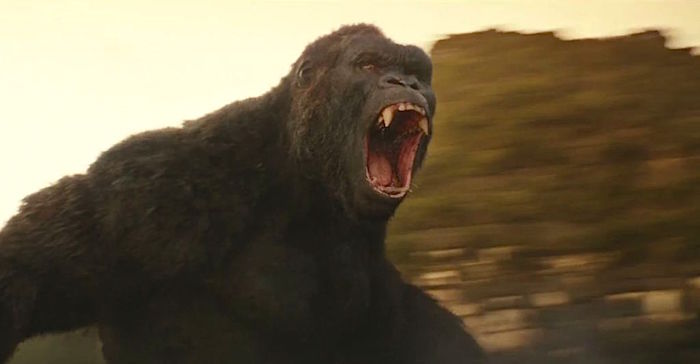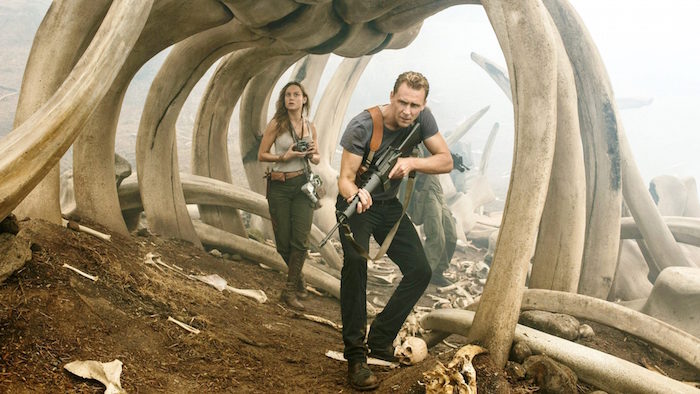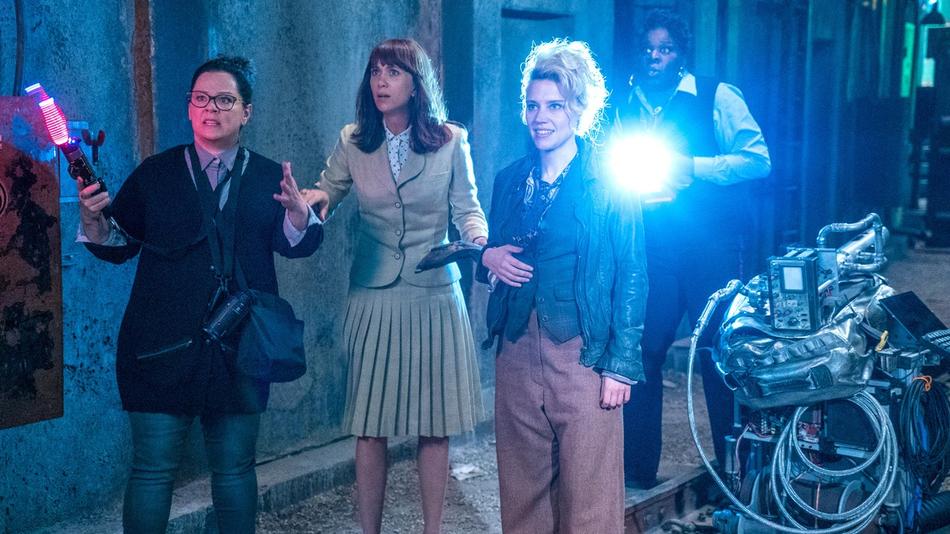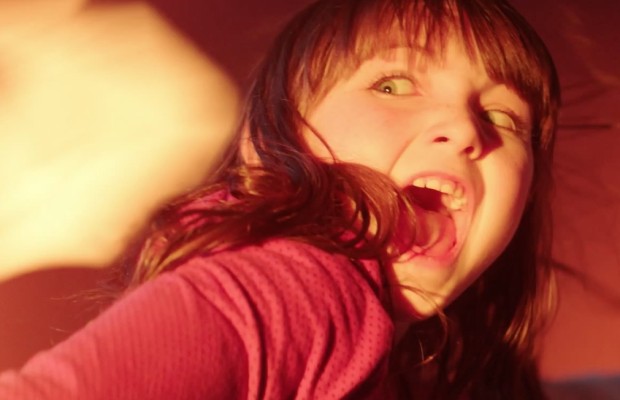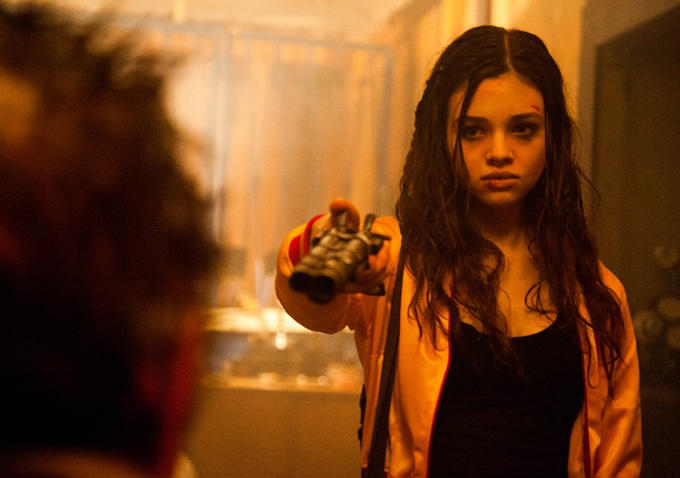SUSPIRIA
 Thursday, October 11, 2018 at 9:37PM
Thursday, October 11, 2018 at 9:37PM Stars: Dakota Johnson, Tilda Swinton, Mia Goth, Lutz Ebersdorf, Angela Winkler, Ingrid Caven, Elena Fokina, Sylvie Testud, Renée Soutendijk, Chloë Grace Moretz and Jessica Harper.
Writer: David Kajganich.
Director: Luca Guadagnino
Rating: ★★ ½
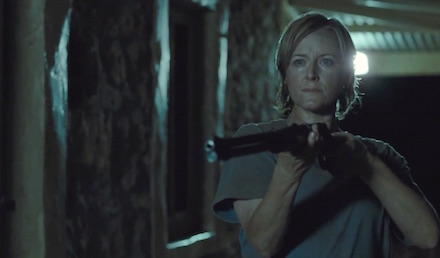
When is a horror movie not a horror movie? When does a remake like Suspiria, a new spin on the defining film of the ‘giallo’ horror sub-genre, forego the right to label itself a ‘horror remake’? Technically it is, of course (or more precisely a ‘homage’, in the words of director Luca Guadagnino), but it is a horror film that doesn’t seem to be particularly interested in being a ‘horror’ film at all.
Released in 1977, Italian filmmaker Dario Argento's surreal original employed primary hues and arch melodrama to tell the tale of an American ballet dancer (Jessica Harper, stunt cameo-ing in the remake) who lands a prized spot at a German ballet school, only to discover it’s a front for a witch’s coven. It is rated highly by 70s Euro-horror buffs for it’s florid palette, painterly composition and gruesome deaths; a film that, if not quite the masterpiece of psychological terror its lavish praising suggests, is certainly a work rich in it’s own sense of style, builds and maintains a disconcerting sense of bewilderment, and delivers some legitimate frights.
Luca Guadagnino’s version is set in 1977, providing the director with a historical and political backdrop for him to return to for no discernable reason, involving the Baader Meinhoff terrorism group’s seizing of an airliner. The American ballet dancer, Susie Bannion, is reimagined as Dakota Johnson, playing younger than the young woman she played in the first Fifty Shades of Grey film nearly four years ago; she’s miscast and not entirely convincing as a dancer (a double is used with little regard for continuity), but she is relatable most of the time as the audience conduit.
Overseeing the German dance studio is Madame Blanc, played by Tilda Swinton, a woman (and actress, one senses) who inspires awe and fear amongst the young dance troupe and faculty alike. She warms to Susie, occasionally at the expense of classmates who are prone to unexplained absences or worst (the film’s first big character demise is a showstopper), and is soon grooming her for more than just lead leggie in a preposterous end-of-year modern-dance spectacle. Swinton has a ball, probably; she gets to also play the film’s primary male character, a psychiatrist named ‘Josef Klemperer’, and a putrid, evil enchantress, both under pounds of prosthetic make-up.
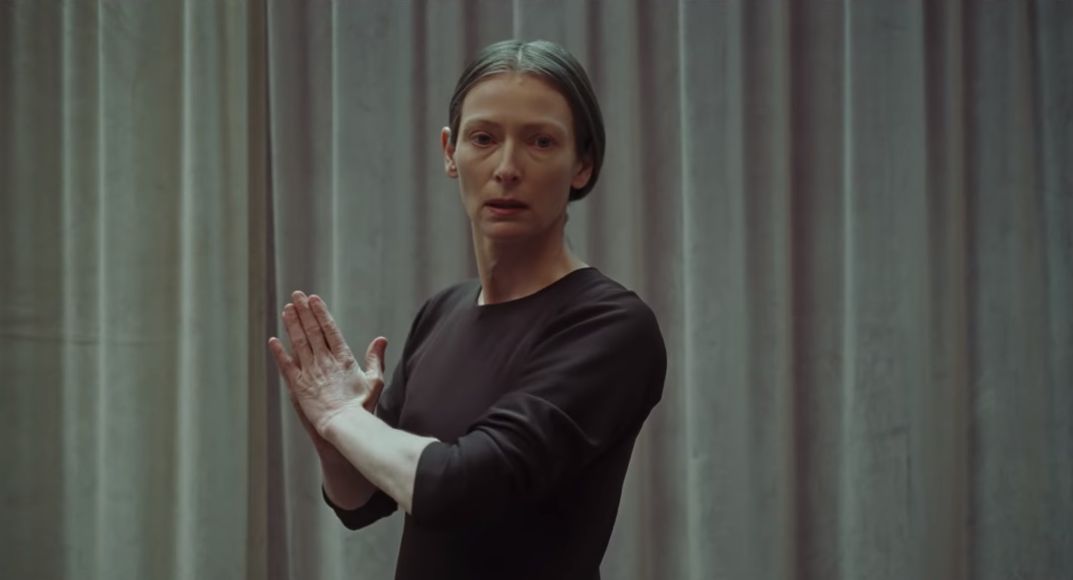
In 2017, Guadagnino directed one of the year’s most beautiful films, Call Me By Your Name; in 2018, he’s directed one of the ugliest. Drawing upon the grim aesthetics of 70s German auteur Rainer Werner Fassbinder, the Italian bathes his angular beauties in at least fifty different shades of grey, a swell as muted browns and purples. It may be deliberate, in that it allows for some nightmarish flourishes of colour at all-too-rare intervals, but it bogs down with a dour drabness a narrative that is already ponderous.
There is satisfaction to be had in watching Guadagnino work gender-specific dynamics with his all-female cast (which includes a terrific Mia Goth and a barely-registering Chloe Grace Moretz); matriarchal dominance, the shifting of a generational hierarchy, maternal legacy and alpha-female predatory tactics make for drama that occasionally compels. One scene sums up the film's attitude to men and what constitutes manhood; a bewitched detective is stripped and humiliated, with Susie looking on covertly.
However, the director (working from David Kajganich screenplay, adapted from the original’s script) never finds an ounce of menace, a modicum of foreboding; there is ultimately fountains of blood, but it will all seem too little too late for even the most patient horror hound. Guadagnino’s intent may have been to pay homage, and there is skill and ambition to burn, yet all that emerges is an admirable if ultimately unnecessary horror remake.
 Chloe Grace Moretz,
Chloe Grace Moretz,  Dakota Johnson,
Dakota Johnson,  horror,
horror,  remake
remake 